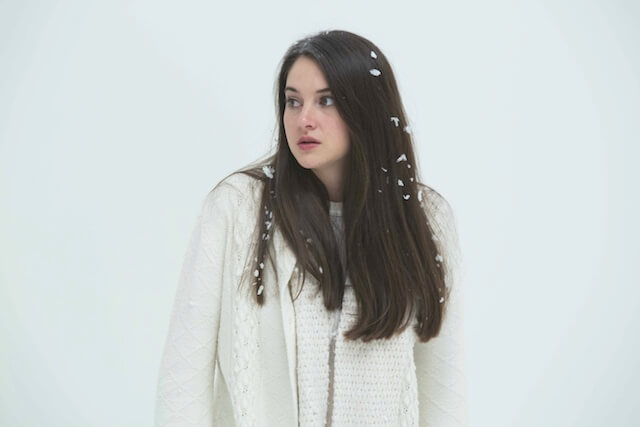‘White Bird in a Blizzard’ Few have “mellowed” the way Gregg Araki has mellowed, which is to say he hasn’t mellowed much at all. The onetime indie and New Queer Cinema bad boy was a true anarchist, in that even progressive types sometimes found his work (e.g., “The Doom Generation,” zero stars from Roger Ebert) abrasive and obnoxious. When he suddenly, in 2004, unleashed “Mysterious Skin” — a thoughtful, deeply empathetic and appropriately disturbing film about the lingering trauma of child abuse —many were shocked. But it was still very Araki, meshing together his artificial, loud, candy-colored aesthetic and usual in-your-face portrait of youth in revolt with unimaginable pain. No one else could have made it. No one else could have made “White Bird in a Blizzard” either, his return to more po-faced fare after a very funny stoner comedy (the Anna Faris-starring “Smiley Face”) and a very fun crazy teen apocalypse movie (“Kaboom”). It’s not nearly as strong, in part because the emotions it’s after are harder to pin down. It’s about grief too, but it’s about so much else besides —perhaps too much else. Based on Laura Kasischke’s novel, it’s ostensibly about a fairly insane suburban hausfrau (Eva Green) who one day vanishes utterly, and how this affects her vaguely rebellious teenage daughter, Kat (Shailene Woodley). But the mystery quickly recedes into the background. What is really is is one of Araki’s thickest stews, throwing into the pot mystery, drama and comedy together with teen hang-outs, hot make-out montages set to Depeche Mode and the director’s casual sex-positivity. Like most Araki protagonists, Kat openly enjoys sex, usually with her shaggy-haired boyfriend (Shiloh Fernandez), but soon with the mustachioed, macho detective (Thomas Jane) trying to hunt down her mother. She comes to accept that her mother is probably never coming back, and “White Bird” settles into a pricklier than usual look at the transition from high school to college life —her mother’s disappearance a metaphor for the period where we sometimes reluctantly become completely different people. That seems limiting, especially as Araki has settled into an artist who just makes films that include things he likes or finds interesting. It’s set in the 1980s for no real reason other than Araki was growing up then and it gives him an excuse, as though he needed it, to coat scenes in synth pop and The Cure. It’s a highly digressive film that keeps getting lost in worm holes —at once meandering and, in its individual passages, tightly focused. And just when it seems like it’s lost its way entirely, it suddenly finds its footing, while still offering a rare form of emotional complexity. Then again, it always had Woodley, who’s established herself as a relaxed center of attention, the person who confidently grounds a movie that doesn’t want to stick on a straight and narrow path. She’s the perfect lead for a movie like this, which otherwise could have —and still does — go far afield. Follow Matt Prigge on Twitter @mattprigge
Director: Gregg Araki
Stars: Shailene Woodley, Eva Green
Rating: R
3 (out of 5) Globes
Review: Shailine Woodley goes risque in ‘White Bird in a Blizzard’

Magnolia Pictures
















